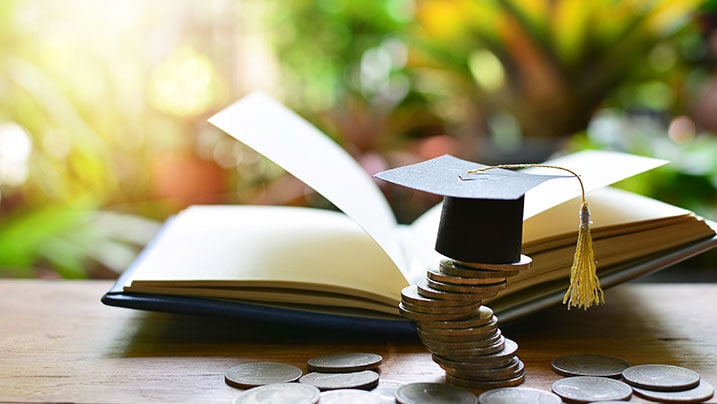
At least 25 million Americans will still have student loans to repay regardless of what happens to President Joe Biden‘s student loan forgiveness scheme, which is currently before the Supreme Court. This is due to the fact that out of the 45 million people who have student debt, Biden claimed that 20 million will have all of their debt forgiven if his plan is supported by the Supreme Court, leaving 25 million to still make some payments.
Those millions of people should get ready (and soon) to start paying loans again
Thus, those millions of people should get ready (and soon) to start paying again, according to experts. After the Supreme Court rules on the relief scheme, or 60 days after June 30 – whichever comes first – student loan payments are anticipated to begin. That indicates that payback will probably begin this summer or fall.
According to a recent poll by Highway Benefits, an employer benefits platform firm, the typical borrower has about $38,000 in debt and will still need to make payments even if the current forgiveness plan takes effect. The study also revealed that 27% of those who had school loans claimed they would be paying back one-third of their salary and that 89% of those who had student debt indicated they weren’t ready to resume payments.
Borrowers must get ready as soon as possible because living expenses are rising in these difficult economic times
Borrowers must get ready as soon as possible because living expenses are rising in these difficult economic times. Derek Pszenny, co-founder and managing partner of Carolina Financial Management, stated that if you are only now beginning to consider it, you may even be stretching the bounds of being too late.
On Nov. 11, the day after a federal court in Texas ruled the loan forgiveness plan unconstitutional, the Department of Education halted accepting applications. By that point, over 26 million Americans had applied for forgiveness and 16 million had already been approved for debt relief. At the moment, the Supreme Court is debating two cases that oppose student loan relief.
Up to 43 million borrowers of federal loans were thought to be eligible for relief throughout the summer, including around 20 million borrowers who would have had their entire outstanding balance canceled. A total of $1.75 trillion worth of student loans are held by almost 45 million Americans.
According to the administration’s plan, which was unveiled last summer, anyone making less than $125,000 or living in households making less than $250,000 would have had $10,000 in federal student loans forgiven, including Parent Plus loans. Receivers of Pell Grants, who often exhibit greater financial need, would also receive a $10,000 debt forgiveness bonus.
The student loan payback moratorium may end this summer or fall
The student loan payback moratorium may end this summer or fall, so there isn’t much time left. To make the most of it, Brian Marks, executive director of the University of New Haven’s Entrepreneurship and Innovation Center, advised people to “get their financial house in order” and spend it wisely. Here are some steps to consider:
- Start cutting expenses and increasing savings or maybe take on extra work. “With 3.4% unemployment, try to find a part-time job to come up with the extra money,” Pszenny said. “That may be the answer people don’t want to hear, but it might be the answer they need to hear.”
- Put the money you would need each month to pay off your student loans into a savings account so that it can earn a little interest until it is needed.
- If you are unable to set aside the whole payment amount each month, Pszenny advised saving a portion of your payment and increasing it or tapering the loan payment into your budget, each month. For instance, you could put aside 25% of your loan payment in the first month, 30% in the second, 35% in the third, and so on. As you start making payments, you can use some of your savings and some of your income to do so, he advised. That allows you to budget for your complete payment over the course of a full year of partial payments from your wage and savings.
- Check your eligibility for other government loan forgiveness programs. “For example, individuals in the non-profit field likely qualify for Public Service Loan Forgiveness, which does not have a cap on the amount of forgiveness, and should take this time to make sure they are properly enrolled,” Lupi said.
- Find out how much your payments will be and whether you can afford them. If not, and if you are not eligible for forgiveness, Randy Lupi, a financial advisor with Equitable Advisers, advised refinancing at a lower interest rate if it is feasible before payments resume. Just keep in mind, he warned, that if loans are refinanced with a private entity, they are no longer qualified for any federal forgiveness programs.
- Consider reducing your loan balance before making payments. 100% of payments made during the pause go towards your principal because the student loan repayment pause has a 0% interest rate, according to Eric Schuppenhauer, Citizens Bank’s head of national banking and lending. If you reduce your loan amount, you might be able to shorten the loan’s term and ultimately save money.
- To see if you qualify for income-driven repayment programs, click here. Income-driven repayment options are available for federal student loans, which can lower your monthly payments.
- You should ask your employer. For instance, Google matches up to $2,500 per year, PwC provides associates and senior associates up to $1,200 annually, and Aetna matches employees’ payments on U.S.-based student loans up to $2,000 annually for a lifetime maximum of up to $10,000 for eligible loans.






